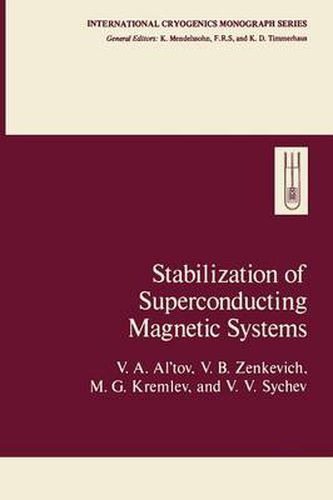Readings Newsletter
Become a Readings Member to make your shopping experience even easier.
Sign in or sign up for free!
You’re not far away from qualifying for FREE standard shipping within Australia
You’ve qualified for FREE standard shipping within Australia
The cart is loading…






This title is printed to order. This book may have been self-published. If so, we cannot guarantee the quality of the content. In the main most books will have gone through the editing process however some may not. We therefore suggest that you be aware of this before ordering this book. If in doubt check either the author or publisher’s details as we are unable to accept any returns unless they are faulty. Please contact us if you have any questions.
I am indeed pleased to prepare this brief foreword for this book, written by several of my friends and colleagues in the Soviet Union. The book was first published in the Russian language in Moscow in 1975. The phenomenon of superconductivity was discovered in 1911 and promised to be important to the production of electromagnets since superconductors would not dissipate Joule heat. Unfortunate ly the first materials which were discovered to be superconducting reverted to the normal resistive state in magnetic fields of a few tesla. Thus the development that was hoped for by hundredths of a the early pioneers was destined to be delayed for over half a century. In 1961 the intermetallic compound NbaSn was found to be superconducting in a field of about 200 teslas. This breakthrough marked a turning point, and 50 years after the discovery of superconductivity an intensive period of technological development began. There are many applications of superconductivity that are now being pursued, but perhaps one of the most important is super conducting magnetic systems. There was a general feeling in the early 1960s that the intermetallic compounds and alloys that were found to retain superconductivity in the presence of high magnetic fields would make the commercialization of superconducting magnets a relatively simple matter. However, the next few years were ones of disillusionment; large magnets were found to be unstable, causing them to revert to the normal state at much lower magnetic fields than predicted.
$9.00 standard shipping within Australia
FREE standard shipping within Australia for orders over $100.00
Express & International shipping calculated at checkout
This title is printed to order. This book may have been self-published. If so, we cannot guarantee the quality of the content. In the main most books will have gone through the editing process however some may not. We therefore suggest that you be aware of this before ordering this book. If in doubt check either the author or publisher’s details as we are unable to accept any returns unless they are faulty. Please contact us if you have any questions.
I am indeed pleased to prepare this brief foreword for this book, written by several of my friends and colleagues in the Soviet Union. The book was first published in the Russian language in Moscow in 1975. The phenomenon of superconductivity was discovered in 1911 and promised to be important to the production of electromagnets since superconductors would not dissipate Joule heat. Unfortunate ly the first materials which were discovered to be superconducting reverted to the normal resistive state in magnetic fields of a few tesla. Thus the development that was hoped for by hundredths of a the early pioneers was destined to be delayed for over half a century. In 1961 the intermetallic compound NbaSn was found to be superconducting in a field of about 200 teslas. This breakthrough marked a turning point, and 50 years after the discovery of superconductivity an intensive period of technological development began. There are many applications of superconductivity that are now being pursued, but perhaps one of the most important is super conducting magnetic systems. There was a general feeling in the early 1960s that the intermetallic compounds and alloys that were found to retain superconductivity in the presence of high magnetic fields would make the commercialization of superconducting magnets a relatively simple matter. However, the next few years were ones of disillusionment; large magnets were found to be unstable, causing them to revert to the normal state at much lower magnetic fields than predicted.